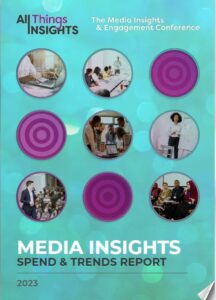Why does the difference between these two experiences matter? Specifying between internal roles and responsibilities is key. The UX team needs to focus on enhancing product usability. Meanwhile, a positive brand experience is the significant mark of CX. Separate but integrated strategies could be the difference between success and failure on these two interrelated fronts.
A Multi-Team Effort
Clearly, in what could be a multi-team process between insights, UX and CX, collaboration and communication are key. There are myriad teams that have and can provide insight into a given subject. Without each account, there cannot be a full picture of what might be true. And still, when that full picture is provided, a well-constructed team must know how to harness the art of insights into cogent decision making to provide the best possible experience for customers.
For the team to be well constructed only solves part of the problem. That team must be not only multifaceted, at its best, that team is multi-functional and multi-disciplinary. With a tip of the cap to ‘culture eating process’ for breakfast, the complex job of solving for a desired business outcome through the identification, analysis and presentation of data needs solid processes. Establishing and consistently updating these processes is necessary.
For a conversation with All Things Insights on UX insights with Shilpi Sinha, Head of UX Research, Partners at LEGO, click here. She points out that there are “many different teams working on data in one way or another but with very different methods.” The goal of course is to harness that data in a way that’s optimally useful for the business enterprise.
Working Together
Both UX and CX can help marketers improve the customer experience by providing data-driven insights into how customers are engaging with their products or services. Through UX research, marketers can identify user needs, behaviors, and preferences that inform the design of a product or service. By understanding these factors, they can tailor experiences to meet users’ expectations and create more meaningful connections with their customers. Additionally, CX research provides feedback from customers on how they perceive the overall brand experience. With this information in hand, marketers can make adjustments to ensure every touchpoint meets customer needs and improves satisfaction levels over time.
To focus first on the UX component, according to ChatGPT, through research and feedback marketers and insights teams can support the customer in several ways.
- Increase usability: UX design can help customers easily navigate the product, understand how to use it, and complete tasks quickly and efficiently.
- Personalize the experience: UX designers can create personalized experiences tailored to different customer needs and preferences.
- Make it easy to find information: Good UX helps customers find what they’re looking for quickly by creating intuitive navigation systems that are easy to access from any page of the website or app.
- Build trust with customers: By designing an experience that is consistent, reliable, and transparent, businesses can build trust with their customers which leads to greater loyalty.
- Offer a unique design: A unique design will make your product stand out from competitors and give users something special that they won’t find anywhere else – making them more likely to stay engaged with your brand.
On the opposite side of the coin, there are several ways that the team can enhance and support the overall customer experience as well.
- Listen to customer feedback: Collect and analyze customer feedback from surveys, social media and other channels to identify areas of improvement in the customer experience.
- Personalize the experience: Use personalization techniques such as dynamic content, targeted messaging, or custom recommendations to provide customers with a more tailored service that meets their individual needs.
- Implement automated processes: Automation can help streamline operational processes so customers don’t have to wait for manual tasks to be completed before they receive a response or resolution.
- Utilize AI-driven technologies: Artificial intelligence can help you better understand your customers through data analysis and uncover insights that will inform decisions about how best to meet their needs and expectations.
- Streamline communication channels: Make it easy for customers to reach out on multiple platforms like email, chatbot, SMS etc., so they can get answers quickly without having to switch between different systems or applications.
Contributor
-

Matthew Kramer is the Digital Editor for All Things Insights & All Things Innovation. He has over 20 years of experience working in publishing and media companies, on a variety of business-to-business publications, websites and trade shows.
View all posts

































































































